I cannot recall a time when the growth in mortgage credit has diverged so wildly from house price growth.
Yesterday’s October results from CoreLogic revealed that Australian dwelling values continued to surge, rising by 1.4% over the month and by 3.7% over the quarter at the 5-city level.
While annual growth remained negative, it has clearly rebounded strongly led by Sydney and Melbourne:
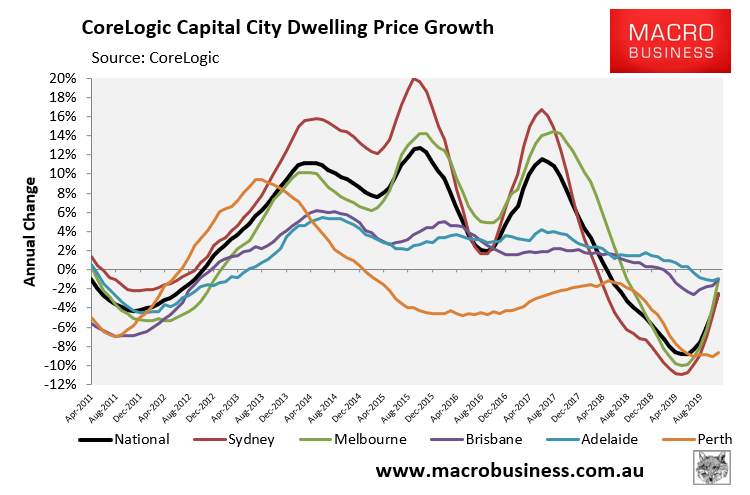
Logically at least, you would expect the stock of mortgage credit to also be rising, given almost all buyers borrow to buy property.
However, yesterday’s credit aggregates data for September from the RBA revealed that annual mortgage credit growth hit the lowest level on record at just 3.1%:
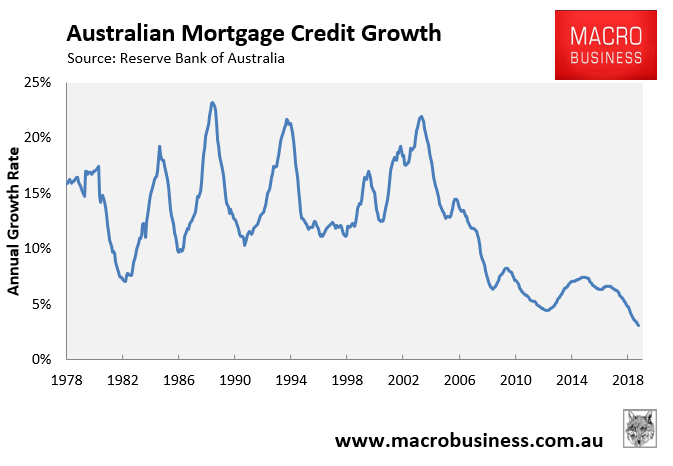
The disconnect between mortgage credit and dwelling values growth is illustrated clearly below:
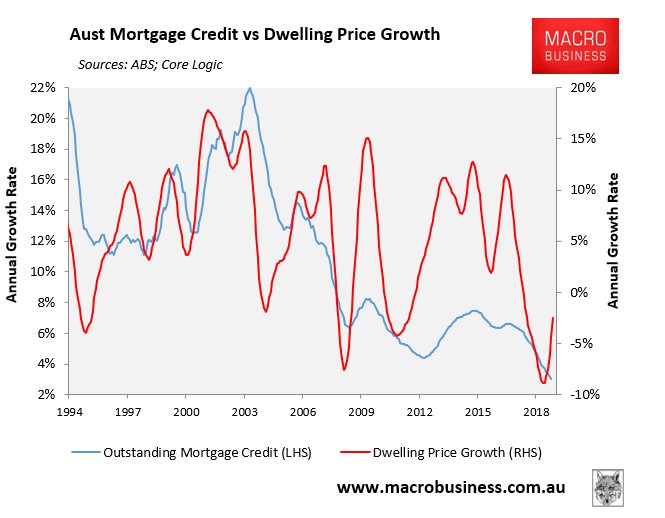
So, what’s going on here? Why the disconnect?
Well, mortgage credit growth measures two distinct things: 1) the addition to the mortgage stock from new mortgages taken out by borrowers (increases the stock of debt outstanding); and 2) the repayment of mortgage debt by existing borrowers (reduces mortgage debt).
Only the first point – new mortgages created – actually impacts house prices. The second – mortgage repayments by existing borrowers – does not reflect new housing demand and does not impact prices.
When interest rates are at record lows – as they are currently – we are likely to see mortgage repayments rise, which lowers mortgage credit growth, but doesn’t actually impact house prices. Similarly, many investors have been forced to switch from interest-only mortgages to principal and interest, meaning they are now lowering the stock of mortgage debt outstanding (other things equal) without adding to housing demand.
For this reason, MB prefers to look at the value of housing finance commitments (excluding refinancings), which only measures new mortgages and leaves out the noise generated by repayments:
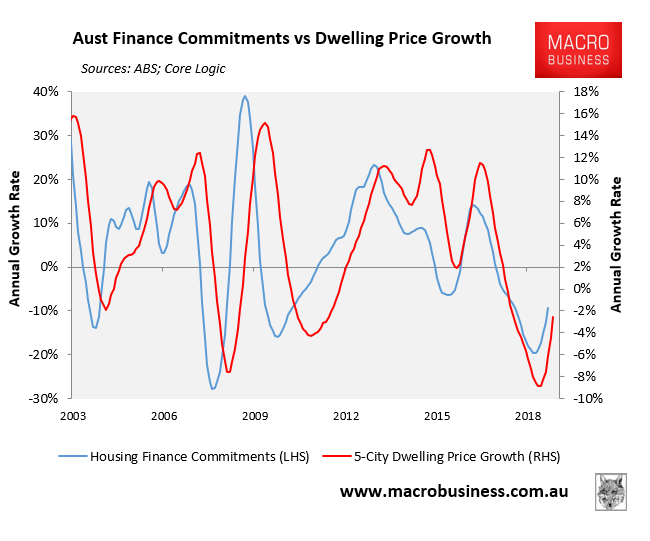
As you can see, the correlation between housing finance and house prices has historically very strong, with housing finance typically leading prices.
However, because of the long lags in receiving housing finance data, we usually find out that the market has turned after CoreLogic’s daily index has already been reported.
Accordingly, we also look at auction clearance rates, since they provide a more timely indicator and also show a strong correlation with dwelling prices:
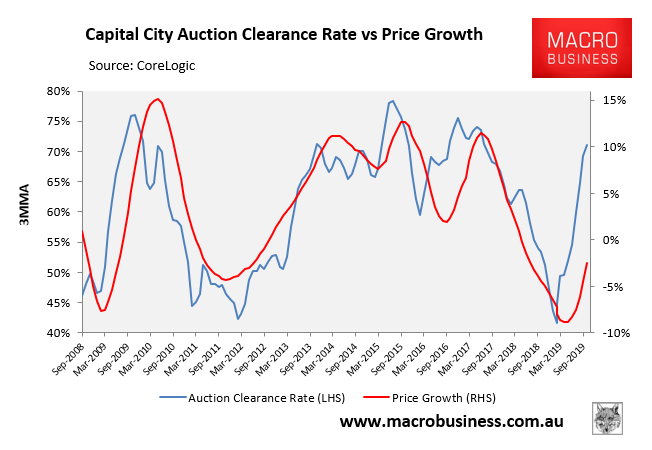
Bottom line: do not place too much emphasis on the RBA’s mortgage credit series and focus on the ABS’ housing finance data, alongside auction clearance rates. These are the best short-term indicators for dwelling prices.

